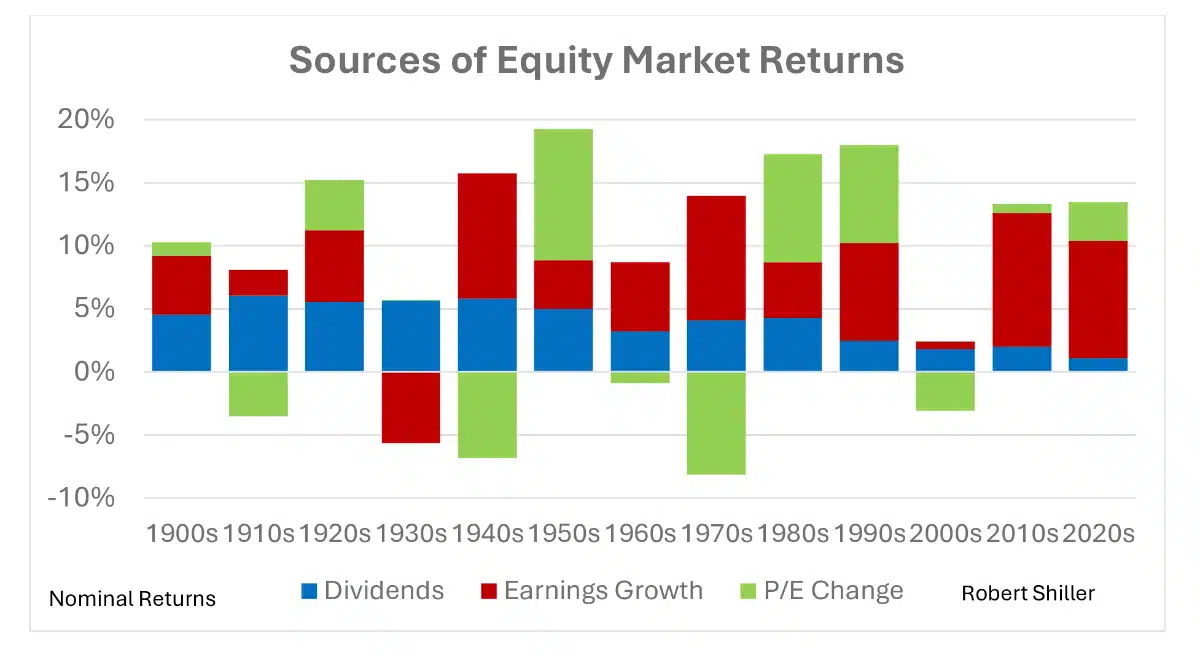
The One Big Beautiful Bill Act’s Impact on Education
Understand new 529 plan rules under the One Big Beautiful Bill Act and what they mean for your family’s education savings strategy.

What has driven equity market performance in the past? About 40-50% of returns have come from Dividends historically, although in recent decades that proportion has shrunk substantially. Earnings Growth has been a consistent driver of returns, and especially large over the last 15 years. Then, there is P/E Change, a measure of how bullish investors are because it is driven by how much investors are willing to pay for stocks today based upon their assessment of their future performance. P/E Change since 1900 has contributed only about 1% to equity market returns, but over the past five decades, it has contributed about 3.4% or 28% of the return of the S&P 500.

Over time the reinvestment of dividends can make a significant difference in total returns. Over the past 20 years, the market has grown 4.4 times in price terms; with reinvested dividends it has grown 6.5 times. Over 30 years in price terms the market rose 9.8 times, vs. 17.2 times with all dividends reinvested.

Of course, these strong returns require the reinvestment of dividends back into the market. Some investors favor dividend paying stocks because of the income that they generate, but remember that there is no free lunch: the stock price declines by the amount of the dividend to be paid when the stock begins to trade “ex-dividend”. Also be careful not to confuse this analysis of the importance of dividends to market returns with expected returns of high dividend paying stocks vs. those that pay low dividends, or no dividends.

Understand new 529 plan rules under the One Big Beautiful Bill Act and what they mean for your family’s education savings strategy.

Beating the market is rare. Learn why most active funds lag and why index investing (buying the haystack) can be the smarter choice.

Customer concentration occurs when a large part of a company’s revenue comes from a single or small group of customers/clients.

The One Big Beautiful Bill Act (OBBBA) was signed into law on July 4 and encompasses hundreds of provisions.